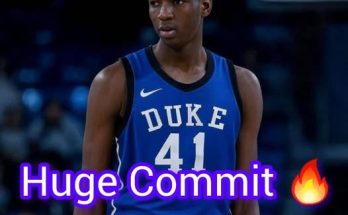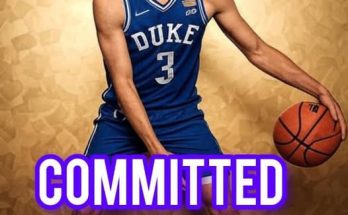The WNBA is facing a firestorm of controversy, as fans, analysts, and insiders raise serious concerns about the league’s treatment of rookie sensation Caitlin Clark. The former Iowa Hawkeye and No. 1 overall draft pick has taken the professional basketball world by storm with her record-breaking college career, massive fan following, and impact on WNBA ratings. But despite her historic entry into the league, troubling patterns have emerged that have led to accusations that the WNBA is not just failing to protect its biggest star—but actively working against her and the Indiana Fever.
Critics argue that Clark is being targeted both physically and politically, as her presence disrupts long-standing dynamics in the league. The Indiana Fever, meanwhile, appear to be caught in the middle, with questionable officiating, bizarre roster decisions, and a lack of institutional support drawing scrutiny from fans and media alike. Some are even suggesting that the WNBA leadership is uncomfortable with the attention Clark is bringing and is intentionally suppressing her rise.
At the center of the uproar is the physicality that Clark has faced since entering the league. From the moment she stepped onto a WNBA court, opposing players have delivered hard fouls, blatant body checks, and often unchecked aggression. In several games, the level of contact directed at Clark has sparked outrage on social media. Fans and commentators have pointed out that similar levels of physical play against league veterans often draw immediate whistles or technicals—but when it comes to Clark, referees frequently turn a blind eye.
The most notorious example came during a nationally televised game, where Clark was shoved to the ground without a foul being called. Replays showed clear contact, but officials allowed play to continue. That incident sparked waves of backlash, with fans flooding social media to demand accountability and player safety. Even NBA players and former WNBA stars began to weigh in, many defending Clark and calling out the apparent double standard.
Yet the silence from WNBA leadership has been deafening. Commissioner Cathy Engelbert has declined to directly address Clark’s treatment, choosing instead to issue broad statements about competitiveness and league parity. That refusal to directly confront the issue has only intensified suspicions that the league is trying to minimize Clark’s presence rather than protect it.
Adding fuel to the fire are allegations that the Indiana Fever themselves are making decisions that appear to sabotage their star player. Analysts have pointed to questionable coaching choices, odd substitution patterns, and limited offensive schemes that fail to fully utilize Clark’s elite shooting and playmaking ability. Despite her demonstrated skill as a floor general, there are games where Clark barely touches the ball for entire stretches, or is used primarily off the ball—raising eyebrows among those who expected the team to be built around her.
Fans have also been quick to notice the stark contrast between the Fever’s lack of offensive cohesion and Clark’s college dominance. At Iowa, she ran the offense with precision and confidence, often carrying her team deep into the NCAA tournament. In Indiana, however, she often appears isolated and disconnected from a system that does not seem tailored to her strengths. Some have gone as far as to suggest that the team is under pressure not to make Clark too dominant, fearing it might shift power dynamics or threaten established stars.
Moreover, there have been growing whispers about internal tensions. Rumors of locker room friction, jealous veterans, and resistance to Clark’s popularity have swirled across message boards and insider circles. While none of these claims have been officially substantiated, the lack of public support from teammates and coaches has only added to the perception that Clark is being isolated—if not outright resented—for the spotlight she brings.
These perceptions have been bolstered by multiple viral moments, where Clark appears visibly frustrated on the bench or in press conferences. Her poise remains intact, but the cracks are beginning to show. In one recent game, after enduring a particularly rough series of non-calls and hard fouls, Clark was seen exchanging heated words with officials. Her visible irritation drew sympathy from fans and condemnation from detractors, further polarizing public sentiment.
Even within the WNBA itself, the reactions to Clark’s rising profile have been sharply divided. Some players, including veterans with years in the league, have spoken out in support of Clark, emphasizing her contributions to attendance, TV ratings, and overall league visibility. Others, however, have been dismissive—suggesting that Clark still needs to “earn” her place and shouldn’t expect special treatment just because of her media following.
This clash between old guard and new star has exposed long-standing fractures within the WNBA. For years, the league has struggled with underfunding, low exposure, and media neglect. Now, with Clark drawing unprecedented attention and ushering in new fans, the league is at a crossroads. Embracing her fully could mean changing its identity and opening itself up to scrutiny. But marginalizing her could risk alienating the very audience the WNBA needs to grow.
As the controversy escalates, the Indiana Fever find themselves under a microscope. The team has yet to publicly defend Clark in any meaningful way, despite the barrage of criticism she faces. Questions about team leadership, coaching vision, and long-term planning continue to swirl. At a time when they should be celebrating the arrival of a generational talent, the Fever appear more adrift than ever.
Fans are not sitting idly by. Every week, social media platforms light up with demands for better officiating, fair treatment, and league accountability. The phrase “Protect Caitlin Clark” has become a rallying cry, uniting both longtime WNBA fans and new arrivals drawn by her charisma and gameplay. There are growing calls for the league to issue statements, investigate officiating patterns, and make structural changes to ensure player safety.
Meanwhile, sports media outlets are increasingly turning their focus to the situation. What began as fan speculation has now become a national conversation, with talk shows, podcasts, and opinion columns dissecting every development. Some pundits have even suggested that the WNBA risks losing its newfound momentum if it fails to support its biggest star and most marketable asset.
The future remains uncertain. Will the WNBA embrace Clark and capitalize on the massive audience she’s brought with her? Or will internal politics, jealousy, and outdated mentalities continue to hold the league back? The outcome could determine not just Clark’s career trajectory, but the WNBA’s broader path forward.
For now, one thing is clear: Caitlin Clark isn’t going anywhere. Despite the hits, the hard fouls, and the mounting pressure, she continues to show up, compete, and shine. Her resilience is inspiring a new generation of fans and players alike. And as the WNBA faces one of the most consequential moments in its history, the world will be watching to see if the league steps up—or squanders its greatest opportunity yet.



